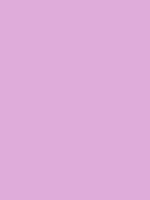#dfacda Color Information
In a RGB color space, hex #dfacda is composed of 87.5% red, 67.5% green and 85.5% blue. Whereas in a CMYK color space, it is composed of 0% cyan, 22.9% magenta, 2.2% yellow and 12.5% black. It has a hue angle of 305.9 degrees, a saturation of 44.3% and a lightness of 77.5%. #dfacda color hex could be obtained by blending #ffffff with #bf59b5. Closest websafe color is: #cc99cc.
-
- R 87
- G 67
- B 85
-
- C 0
- M 23
- Y 2
- K 13
● #dfacda color description : Very soft magenta.
#dfacda Color Conversion
The hexadecimal color #dfacda has RGB values of R:223, G:172, B:218 and CMYK values of C:0, M:0.23, Y:0.02, K:0.13. Its decimal value is 14658778.
| Hex triplet | dfacda | #dfacda |
|---|---|---|
| RGB Decimal | 223, 172, 218 | rgb(223,172,218) |
| RGB Percent | 87.5, 67.5, 85.5 | rgb(87.5%,67.5%,85.5%) |
| CMYK | 0, 23, 2, 13 | |
| HSL | 305.9°, 44.3, 77.5 | hsl(305.9,44.3%,77.5%) |
| HSV (or HSB) | 305.9°, 22.9, 87.5 | |
| Web Safe | cc99cc | #cc99cc |
| CIE-LAB | 76.226, 26.174, -16.018 |
|---|---|
| XYZ | 57.837, 50.256, 72.98 |
| xyY | 0.319, 0.278, 50.256 |
| CIE-LCH | 76.226, 30.686, 328.534 |
| CIE-LUV | 76.226, 26.394, -29.201 |
| Hunter-Lab | 70.892, 21.569, -11.412 |
| Binary | 11011111, 10101100, 11011010 |
Color Schemes with #dfacda
Alternatives to #dfacda
Below, you can see some colors close to #dfacda. Having a set of related colors can be useful if you need an inspirational alternative to your original color choice.
#dfacda Preview
This text has a font color of #dfacda.
<span style="color:#dfacda;">Text here</span>This paragraph has a background color of #dfacda.
<p style="background-color:#dfacda;">Content here</p>This element has a border color of #dfacda.
<div style="border:1px solid #dfacda;">Content here</div>.text {color:#dfacda;}.background {background-color:#dfacda;}.border {border:1px solid #dfacda;}Shades and Tints of #dfacda
A shade is achieved by adding black to any pure hue, while a tint is created by mixing white to any pure color. In this example, #020102 is the darkest color, while #faf3fa is the lightest one.
-
#020102
#020102rgb(2,1,2) -
#10060f
#10060frgb(16,6,15) -
#1e0c1c
#1e0c1crgb(30,12,28) -
#2c112a
#2c112argb(44,17,42) -
#3b1737
#3b1737rgb(59,23,55) -
#491c44
#491c44rgb(73,28,68) -
#572152
#572152rgb(87,33,82) -
#65275f
#65275frgb(101,39,95) -
#732c6c
#732c6crgb(115,44,108) -
#81327a
#81327argb(129,50,122) -
#903787
#903787rgb(144,55,135) -
#9e3d94
#9e3d94rgb(158,61,148) -
#ac42a1
#ac42a1rgb(172,66,161)
-
#b949ae
#b949aergb(185,73,174) -
#be57b4
#be57b4rgb(190,87,180) -
#c465ba
#c465bargb(196,101,186) -
#c973c1
#c973c1rgb(201,115,193) -
#cf82c7
#cf82c7rgb(207,130,199) -
#d490cd
#d490cdrgb(212,144,205) -
#da9ed4
#da9ed4rgb(218,158,212) -
#dfacda
#dfacdargb(223,172,218) -
#e4bae0
#e4bae0rgb(228,186,224) -
#eac8e7
#eac8e7rgb(234,200,231) -
#efd6ed
#efd6edrgb(239,214,237) -
#f5e5f3
#f5e5f3rgb(245,229,243) -
#faf3fa
#faf3fargb(250,243,250)
Tones of #dfacda
A tone is produced by adding gray to any pure hue. In this case, #c9c2c8 is the less saturated color, while #fe8df3 is the most saturated one.
-
#c9c2c8
#c9c2c8rgb(201,194,200) -
#cdbecc
#cdbeccrgb(205,190,204) -
#d2b9cf
#d2b9cfrgb(210,185,207) -
#d6b5d3
#d6b5d3rgb(214,181,211) -
#dbb0d6
#dbb0d6rgb(219,176,214) -
#dfacda
#dfacdargb(223,172,218) -
#e3a8de
#e3a8dergb(227,168,222) -
#e8a3e1
#e8a3e1rgb(232,163,225) -
#ec9fe5
#ec9fe5rgb(236,159,229) -
#f19ae8
#f19ae8rgb(241,154,232) -
#f596ec
#f596ecrgb(245,150,236) -
#fa91ef
#fa91efrgb(250,145,239) -
#fe8df3
#fe8df3rgb(254,141,243)
Color Blindness Simulator
Below, you can see how #dfacda is perceived by people affected by a color vision deficiency. This can be useful if you need to ensure your color combinations are accessible to color-blind users.
